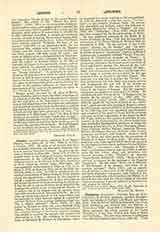

Linkoping (LINCOPIA), Ancient See of (LINCOPENSIS), in Sweden, originally included Ostergotland, the Islands of Gotland and Oland, and Smaaland. The district of Varend in Smaaland was taken from Linkoping and formed into the Diocese of Vexio about 1160. From 990 to 1100 the Diocese of Skara embraced the whole country of the Goths (Gauthiod); it was then divided into those of Skara and Linkoping. The first three bishops of Linkoping were Herbert, Richard, and Gisle (c. 1138-48). Then came Stenar, who apparently resigned in 1160 and subsequently became Bishop of Vexio; Kol (c. 1160-95), who was killed at Rotala, Esthonia, August 8, 1220, when fighting against the heathen; and Benedict (1220-37), the first of a long line of pious and munificent prelates, who built and endowed the fine cathedral, which had been begun in 1150 but was not finished at the Reformation. Among these was Blessed Nicholas Hermansson (1374-91); educated at the University of Orleans, he had been tutor to Charles and Birger, the sons of St. Bridget, whose body he received when it was brought to Vadstena by St. Catherine. He composed a beautiful Office in honor of St. Bridget, which included the hymn “Rosa rorans bonitatem”. The last Catholic Bishop of Linkoping was Hans Brask (b. 1464; bishop, 1513-27; d. July 30, 1539), the valiant champion of the Old Learning, who was compelled to leave his diocese in 1527 owing to the adoption of Lutheranism as the state religion at the Diet of Westeraas.
The cathedral of Linkoping, the abbey church of Vadstena, and the numerous interesting churches on the Island of Gotland bear witness to a splendid Catholic past. Of the numerous provincial and diocesan synods held in the Diocese of Linkoping the Council of Skenninge was the most important. The papal legate, Cardinal William of Sabina, presided and the celibacy of the clergy was strongly enforced. The following religious institutions were set up in the diocese between the twelfth and the sixteenth centuries: The cathedral chapter, which consisted at the time of the Reformation of a dean, an archdeacon, a sub-dean, nine canons, and fifteen other prebendaries; the Cistercians, who had three houses for men, the abbeys of Alvastra, the mother-house of the Cistercian Order in Sweden, in Ostergotland, Nydala in Smaaland, both founded in 1143, and Gutvalla (Roma) in Gotland; also four nunneries, Vreta (1160), Askaby, Byarum, dissolved about 1250 and the nuns transferred to Sko (Upland), and Solberga (Gotland); the Brigittines, who had the great Abbey of Vadstena (q.v.); the Dominicans, who possessed priories at Skenninge (1220?), Visby (1240), and Calmar, as well as nunneries at Skenninge (1260) and Calmar (1286). There were hospitals at Linkoping, Visby (2), Soderkoping (2), Skenninge (2), Calmar (2), Norrabygd (Uknaback), and on the Island of bland. Most of these institutions were destroyed at the Reformation.
A. W. TAYLOR

